Hiccups are a rather common thing in babies, especially ones who are less than a year old.
But it isn’t an immediate cause for concern, dear mamas.
Newborn hiccups after breastfeeding tend to occur because of unnatural nursing positions, overfeeding, swallowing excess air, or something that simply didn’t sit well with the baby and his little digestive system is having a reaction to it.
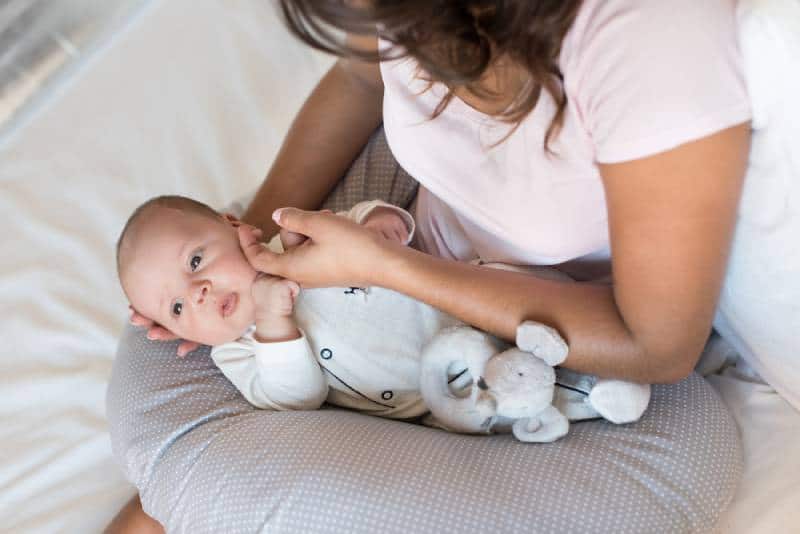
Now, hiccups are nothing serious to worry about, but they sometimes can cause a lot of discomfort for little ones, depending on the cause.
The daughter of a close friend of mine used to have nasty bouts of hiccups that she said were so strong they moved her child half an inch every time they happened.
If you are concerned that it might be a deeper problem than just awkward nursing techniques, do consult your pediatrician, but before you do, you can take some of the advice I’m offering to recognize and resolve this minor problem with ease.
7 Steps To Get Rid Of Baby Hiccups
Luckily, there are plenty of ways to resolve a baby’s hiccups, most of them commonly seen on TV shows (though maybe not the greatest source of credible information).
Plus, they’re nothing overly complicated or back-breaking, rather simple adjustments to things you might not be doing correctly that are making the hiccups appear in the first place.
It’s no big deal if everything isn’t perfect.
Babies don’t exactly come with an instruction manual, so a problem here and there will undoubtedly arise.
Trust me, I speak from plenty of my own experience gained through my own mistakes.
If you’re newer to the whole mothering thing and find yourself lost, look to consult with other moms and how they solved hiccups in their kids, but first see if any of the following can help you solve the problem when it crops up:
1. Hold them in an upright position for about 10-15 minutes after feeding
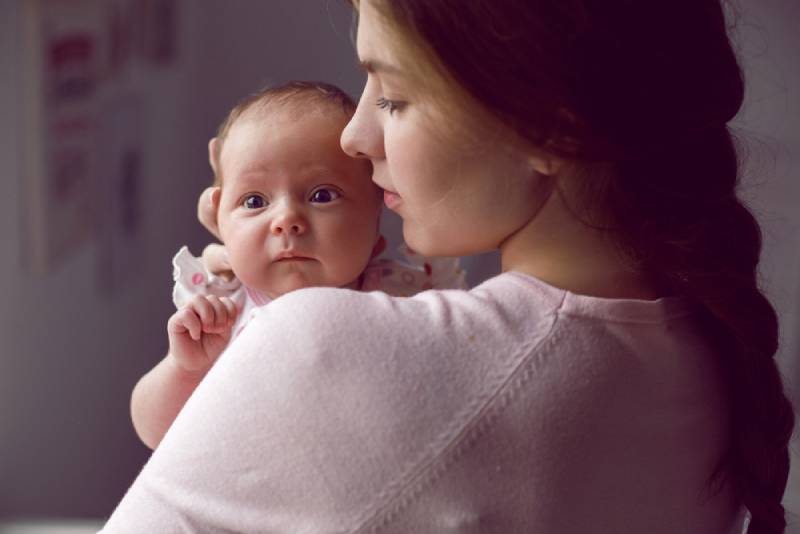
Keeping the baby upright will help the digestive system process the food naturally and release any pressure from the diaphragm, causing the hiccups to disappear.
2. Bend them over your shoulder and pat your baby’s back to burp them.
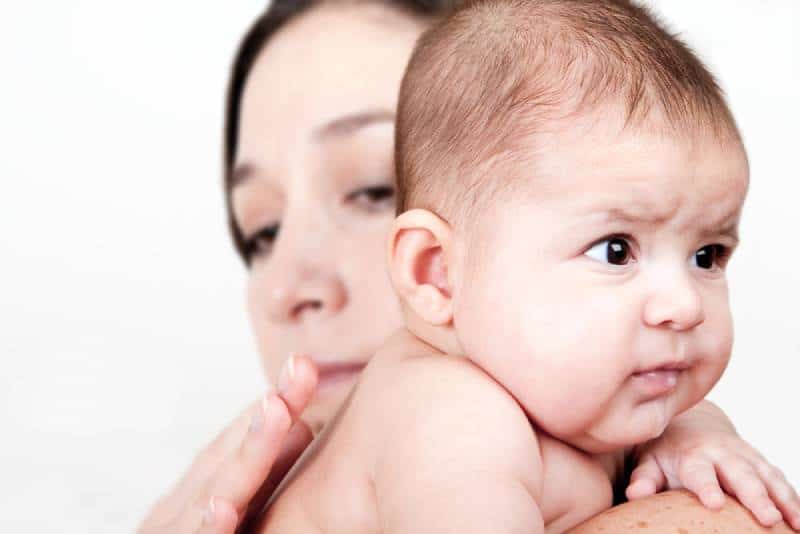
Doing this is the most common technique seen in all forms of media and taught by most baby care experts.
Frequent light patting causes the bubbles of trapped gas to move along the baby’s system and exit out in form of burping (it might also cause them to do some spitting up, so do be careful).
Watch how your child reacts to your tempo – if it’s not working or if it seems like it’s too much for them, adjust the pace and intensity of the patting accordingly.
3. Observe the way they cling to your areola
She may not be wrapping her lips around it fully, letting air go in along with the milk, which is causing the hiccuping.
If you’re having trouble finding a position that fits you and your baby, again, seek help from other moms or hire a lactation consultant for some advice.
It’s all completely normal in this day and age, especially given our busy schedules.
The same can happen with bottle-feeding, depending on the shape of the silicone nipple.
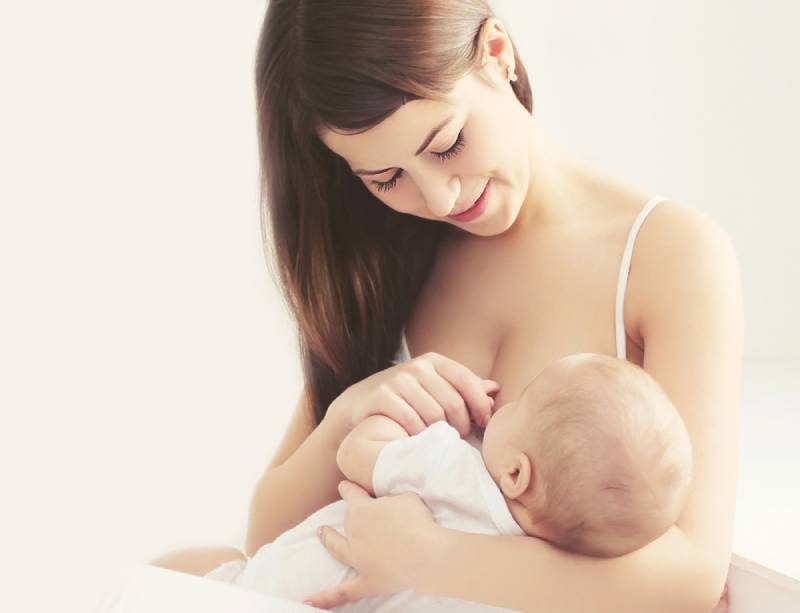
Buy the one that’s right for your baby – one that is most similar to the shape of your own nipple, that’ll be recognizable to their little mouths and won’t make them readjust every time you swap between them.
That difference is usually the cause of hiccups in the first place.
In my case, it wasn’t as much about the hiccups as it was with nipple confusion at the time.
Using the wrong shape made my first little one cry all the time.
Getting the right one will solve a lot more problems than just hiccups, trust me.
4. Use a pacifier
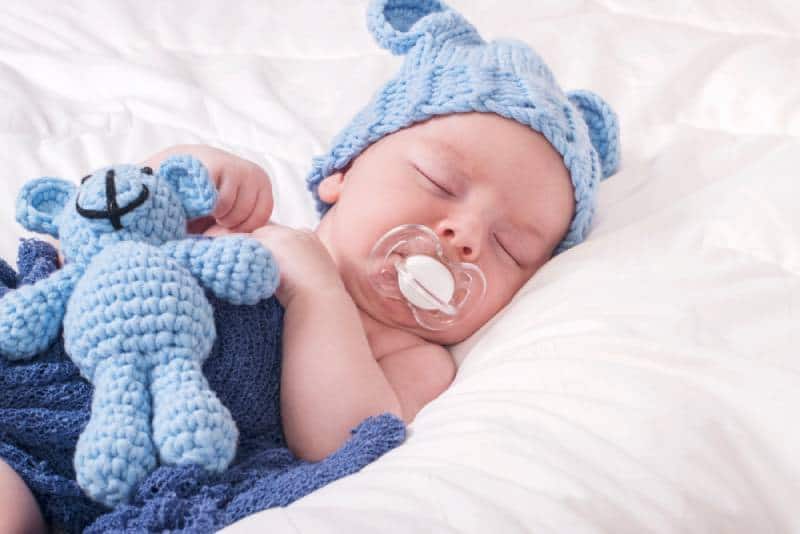
A pacifier will help your baby train her mouth to cling to your own nipple better when they need to breastfeed, plus it simulates your nipple without the need for you being there in case you might be tired or otherwise unavailable when the hiccups start.
A pacifier could help Dad or the nanny deal with hiccups easier without your little one always relying on mommy to solve all of their problems.
Also, much like with the bottle, look for one that most resembles your own nipple so they get used to one shape and don’t have to readjust all the time.
5. Give them gripe water
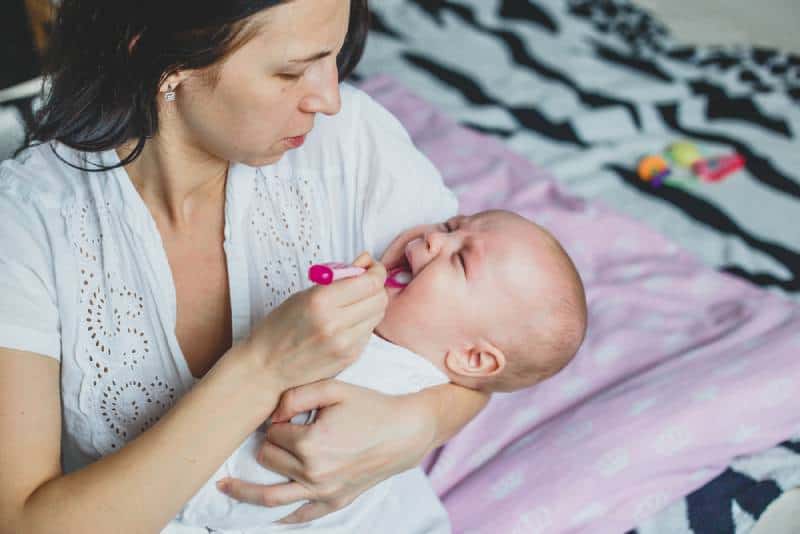
Gripe water is this mix of herbs in regular water that helps relieve colic in a baby, freeing up its respiratory system and usually aiding in getting them back to normal.
Consider gripe water in case nothing else seems to be working, but do make sure to read up on the ingredients and consult with your family pediatrician before introducing anything new to your baby’s diet.
6. Rub their tummy
I know it sounds absurdly simple, but most of the time that’s what it is.
Hiccups aren’t the end of the world by any means, just a temporary obstruction that needs some care and attention.

If hiccups start cropping up, a simple method can also be to lay your baby down and provide them with the soft, warm and tender tummy rubs they’ll most certainly enjoy.
One of the best methods of solving the hiccup problem, no doubt about it.
It’s a method I commonly use on my kids even now, whether it’s a hiccup or anything else that might be upsetting their tummy.
A soft rub can make it all better, especially with a warm touch.
7. Just let it go

Normally, newborn hiccups after breastfeeding can go away on their own without you having to intervene.
If it happens, let them run their course if your baby doesn’t seem too distressed by them.
They should stop after a few minutes.
Why Does It Happen?
Well, nobody knows exactly why an infant’s specifically get frequent hiccups, but the most common causes are gulping some extra amount of air along with the breast milk during breastfeeding, irregular breathing, and just gas bubbles that exited oddly – more or less the same way it occurs in adults.
Sometimes it might be caused through acid reflux or gastroesophageal reflux, which is something that isn’t exclusive to babies.
It’s that time when your partially digested food, all soaked in stomach acids, decides to rise back up to the throat and cause that painful burning sensation.
I used to suffer from that during my teenage years due to bad dietary choices (soda ain’t fun) and it was a pain to deal with.
Though mine was easy to treat because I knew it was occuring, it’s a bit harder to notice in babies.
But if you notice them spazzing out and crying often right after feeding, it might be hurting them and causing hiccups.

What Not To Do
DO NOT try scaring them. All you’ll be doing is traumatizing your poor child or forcing him to do something he doesn’t like.
And I doubt you want to be considered as someone the baby fears, right?
Another thing: DO NOT make them hold their breath, UNDER ANY CIRCUMSTANCES.
Babies can’t regulate their breathing as well as adults can and it’s a great risk! Please do not do this; I can’t emphasize it enough.

Also, avoid alternating quickly between warm and cold foods.
In some cases alternating the temperature of the baby’s stomach tends to cause the onset of hiccups.
And lastly, do not panic. As I’ve mentioned, hiccups aren’t a cause of great concern.
Don’t jump to some doomsday conclusion if it tends to occur a few times in a short amount of time.
Just chill, breathe deeply, and relax or your stress might start to provoke some hiccups in you too!
Preventing Hiccups
One way you can prevent hiccups or at least lower the chances of them occurring is by not trying to use food as a means of calming them.
Make sure they’re calm when you feed them, otherwise they have a higher chance of gulping.
Practicing proper feeding positions assists in preventing hiccups from appearing in the first place.
At least from feeding.
If you make sure the baby isn’t sucking up any air along with the milk, whether from a bottle’s silicone nipple or the real thing.
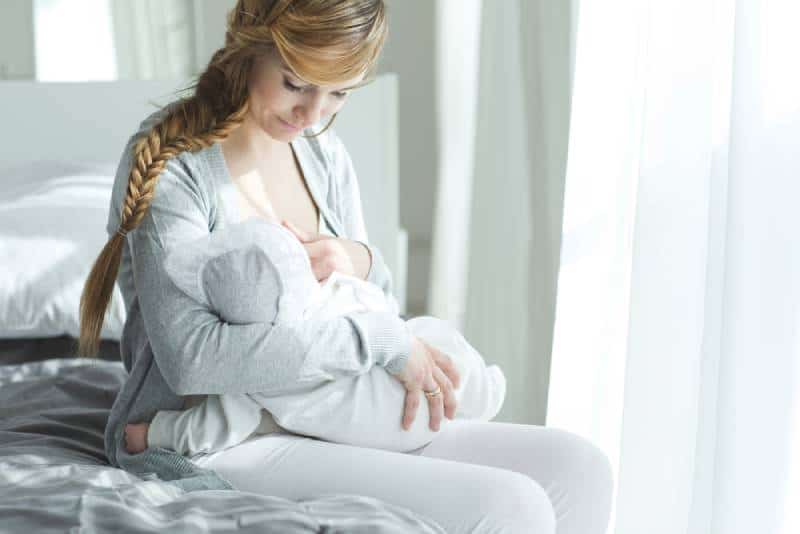
In the bottle’s case, you might want to tilt it so the milk is facing the nipple and the air is stuck in the back of the bottle.
Feeding them in smaller “portions” works as well.
You pace their feeding a bit better and reduce the chance of a lot of excess air buildup in the diaphragm, letting it even out naturally through a little burp instead of a hiccuping fit.
It’ll save you the trouble of constantly having to lightly pat them on the back to burp them if your baby is still gulping up a lot of air alongside their meal.
What To Do If The Hiccupping Persists?
Usually frequent hiccups aren’t a problem with newborn babies in their first year.
Babies get hiccups even in their womb.

But if it keeps continuing even after that period of time or if it’s causing them to wake up and disturb their sleep cycles, do take them to your pediatrician since there might be a bigger problem afoot than simple infant hiccups.
With that said, I’m not here to fearmonger. The odds of a baby having serious ‘hiccup issues’ is rather minimal.
Conclusion
Overall, hiccups are nothing to worry about, it’s just your baby’s stomach acting up a bit because of some extra gas that makes their diaphragm contract and cause a bit of bloated discomfort.
Thankfully, my babies didn’t have too many issues with hiccups when they were born and nothing serious had developed from them.
Heck, your little one might even find it funny, but do make sure to keep an eye on it still if it’s causing problems.
That’s all from me this time, mamas, I hope I’ve helped you get rid of the nuisance of baby hiccups.
Like this post? Please share or pin it for later. You can also stay in the loop and follow us on Facebook, Instagram and Pinterest.
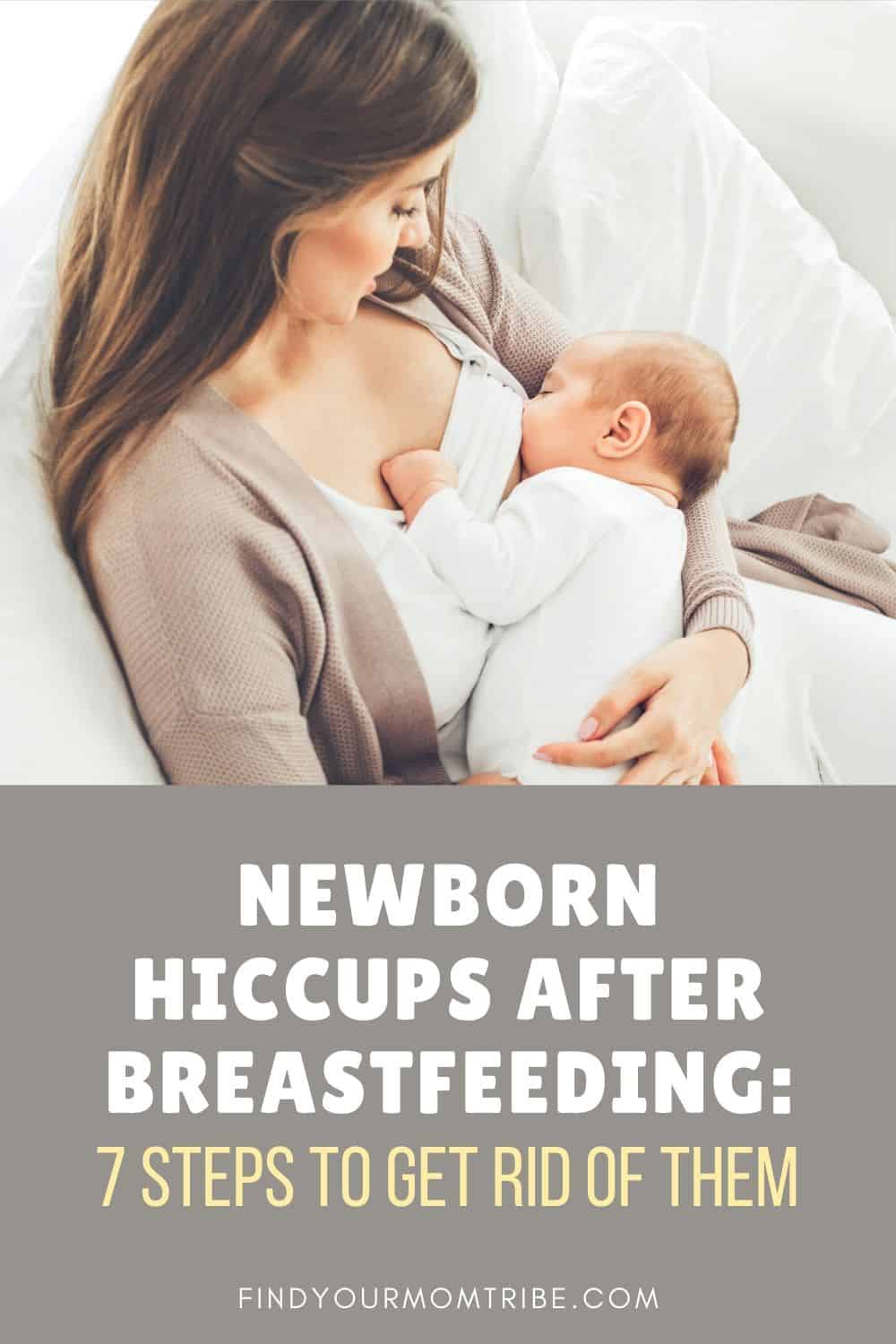
This post contains affiliate links. Please see our full disclosure for more info.

